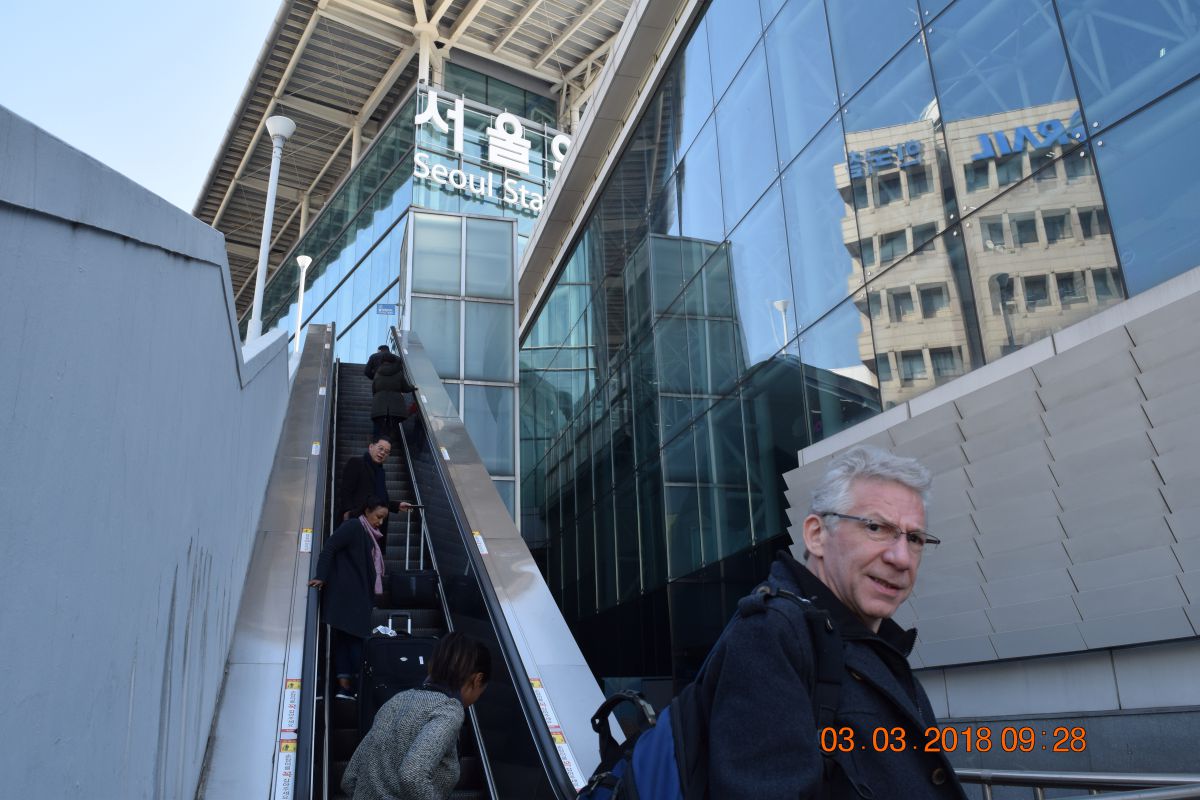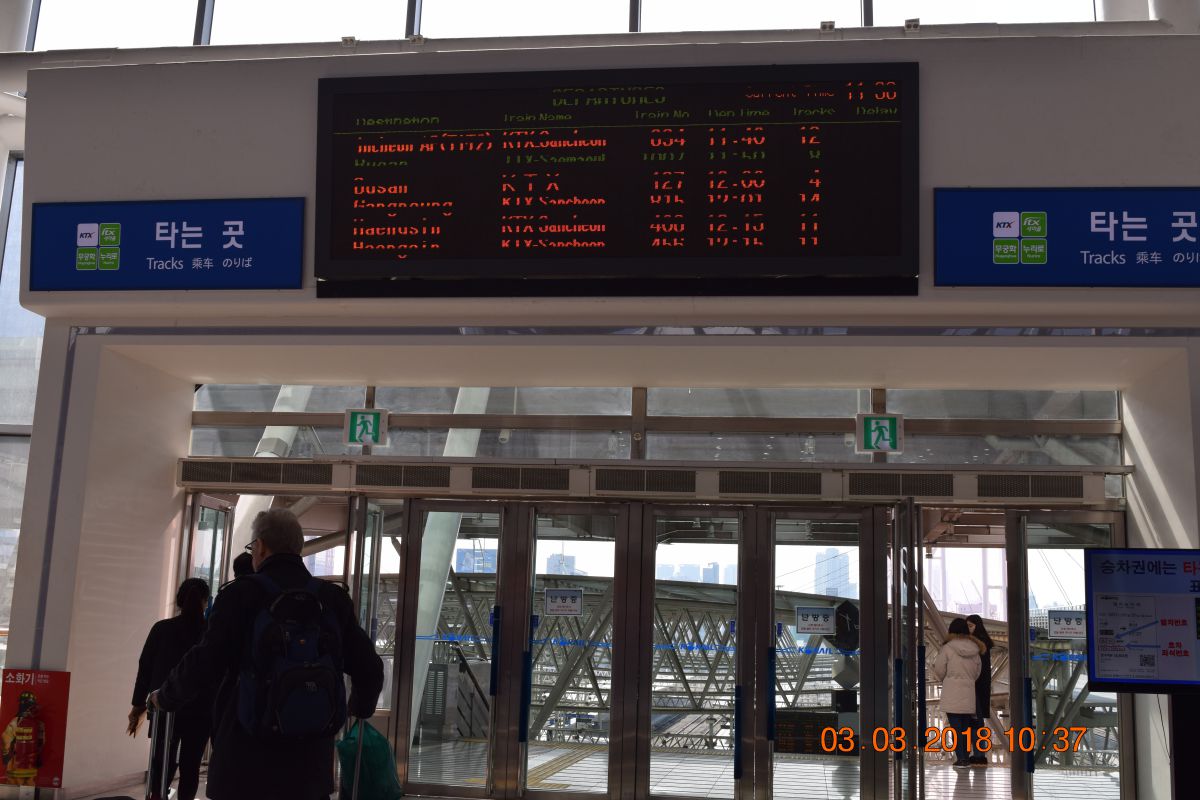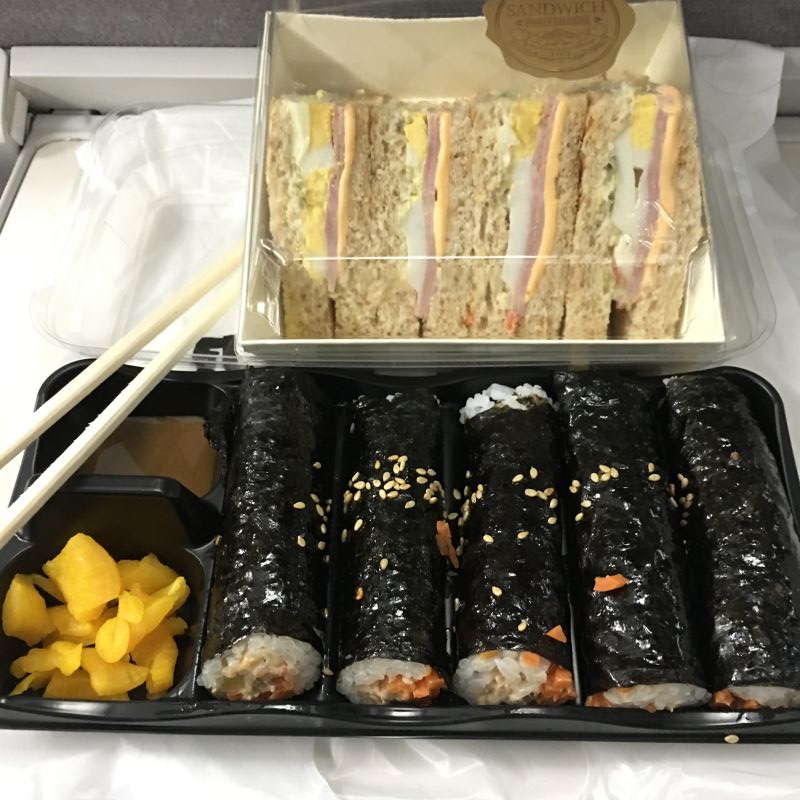둘째

AREX express trains provide service to Incheon International Airport Terminal 2 station. Service began December 29, 2010. Seoul Subway serves the station with Line 1 and Line 4, and an hourly train on the Gyeongui–Jungang Line.
A giant display reminds all of us about the Winter Olympics of the past week en the coming Paralympics


 This looks great for a snack on the train
This looks great for a snack on the train Expensive Valentine cakes still on sale weeks after Valentine..."
Expensive Valentine cakes still on sale weeks after Valentine..."Time to get on the train. Jas get exited when the landscapes turn white. It takes about 90 minutes to reach Jinbu. The owner of Starvill pension house awaits us in the train station. With "google translate" the owner introduces himself and drives us to his place. He explains that the busy days of the winter Olympics are over and all guests have left. It is a unique winter event for him because most of his regular guests come in summer time. On arrival both man & wife of the pension house helps us to the room with the needed instructions. There is no in-house restaurant but luckily we have leftovers from what we bought in Seoul with us and can survive the rest of the day. The room has all the amenities you need, a bathroom with amenities, a fully equipped kitchen, TV and high speed Internet. The room temperature is warm to hot. We go out for a stroll in the area to enjoy the clean fresh air. If you need a place to relax, away from the hustle & bustle, this is it.
Pyeongchang (in full, Pyeongchang-gun) is a county in the province of Gangwon-do, South Korea, located in the Taebaek Mountains region. It is home to several Buddhist temples, including Woljeongsa. It is about 180 km (110 mi) east southeast of Seoul, the capital of South Korea, and connected by expressways and high-speed passenger railways. Pyeongchang's slogan, "Happy 700 Pyeongchang", is taken from its average elevation of approximately 700 metres (2,300 ft).
History
Pyeongchang region was ruled by the Goguryeo Dynasty during the Three Kingdoms period, and it was called Uk-o-hyeon (욱오현). After the Silla dynasty conquered the Goguryeo Dynasty and Baekje Dynasty, it was renamed Baek-o-hyeon (백오현).
After the Goryeo Dynasty was established, it renamed Pyeongchang-hyeon. Then, it was under control of Wonju. When a 10-provincial system was enforced, the north of Pyeongchang region was involved in Sakbang-do, and the south of the region was involved in Jungwon-do. When a new administrative system was carried out by King Hyeonjong, the east of the region was involved in Dong-gyeo, and the rest of it was included in Yanggwang-do. An administrator for the region was sent from the central government, and it became independent of Wonju in 1299.
When the Joseon Dynasty was founded in 1392, the region was promoted from a hyeon to a county (gun). After the territory was divided into 8 Provinces under the reign of King Taejong, it was involved in Gangwon-do. After the territory was divided into 23 districts in 1895 with the 8-provincial system abolished, it was included in Chugju-bu. When a 13-provincial system was enacted in 1896, it was involved in Gangwon-do.


























Comments powered by CComment